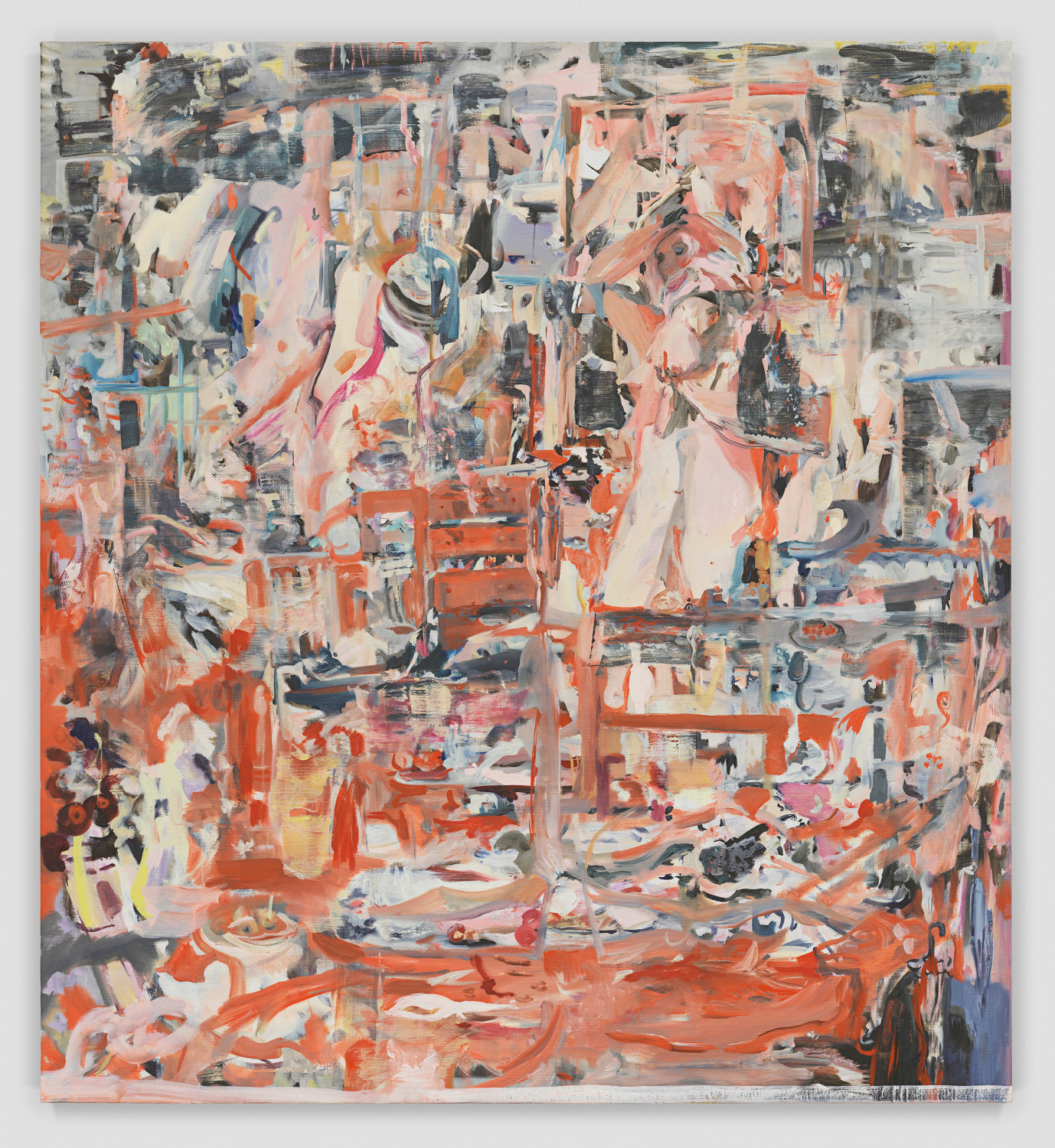
Cecily Brown, Picture This, 2020, oil on linen, 47 x 43 in. (119.4 x 109.2 cm). © Cecily Brown. Green Family Foundation. Courtesy Paula Cooper Gallery, New York. Photo: Steven Probert
This fall, the Dallas Museum of Art (DMA) premieres a major mid-career retrospective of pioneering British-American painter Cecily Brown—the first exhibition to fully explore her work through the lens of its groundbreaking reconfiguration of cultural politics. Cecily Brown: Themes and Variations brings together nearly 30 large-scale paintings and drawings from across almost 30 years of Brown’s career, including two new works on paper that will be shared with the public for the first time. The exhibition offers a closer look at Brown’s practice, examining the way her work challenges art history’s traditional values and presents women as complex and fully realized authors and subjects.
The exhibition is co-organized by the Dallas Museum of Art and the Barnes Foundation and is curated by Dr. Anna Katherine Brodbeck, the Hoffman Family Senior Curator of Contemporary Art at the DMA, and independent art historian and consulting curator for the Barnes Foundation Simonetta Fraquelli. Following its presentation in Dallas from September 29, 2024, through February 9, 2025, Cecily Brown: Themes and Variations will be on view at the Barnes Foundation from March 9 through May 25, 2025.
“The Dallas Museum of Art is proud to premiere this survey of Cecily Brown, who has been a significant figure in the field of contemporary painting since she burst onto the scene three decades ago,” said the DMA’s Eugene McDermott Director Dr. Agustín Arteaga. “Aligning with her own reassertion of women’s positions within the art historical canon, Brown is part of a pantheon of exceptional women that the Museum will spotlight over the coming year, including our current exhibition Frida: Beyond the Myth and the upcoming solo exhibition of Marisol.”
Cecily Brown (b. 1969, London, UK; lives and works in New York, NY) first moved to New York in the mid-1990s, following her graduation from the renowned Slade School of Fine Art in London. Since storming the “boys’ club” of painting that had dominated the New York scene for decades, Brown has defied expectations of what art can be. Her radical artistic approach—which occupies the space between figuration and abstraction—affords near endless possibilities for interpretation and reinterpretation, with layered brushwork that excavates and overlays cultural references and art historical motifs.
Cecily Brown: Themes and Variations is organized around scenes and motifs prevalent throughout visual culture, including the boudoir, the garden, the shipwreck, and the hunt. Brown’s references range from centuries-old European paintings to contemporary pop songs; her sources’ messages of male domination over women and the natural world are subverted, however. Instead, she complicates the gendered stereotypes of traditional genres and even incorporates the rarely seen male nude. Just as she reexamines art history with contemporary issues in mind, she is known to repeatedly revisit her own works to generate new compositions, collapsing time and space in her dynamic canvases and works on paper.
Themes and Variations brings together a selection of nearly 30 works from the mid-90s to today, drawn from prominent institutional and private collections, including from important Dallas-based collectors such as Marguerite Hoffman and Cindy and Howard Rachofsky, as well as the Labora Collection. Featured works include Girl on a Swing (2004), which complicates the voyeurism on display in rococo style painting. Another highlight, The Splendid Table (2019-2020), is a monumental triptych that takes inspiration, in part, from 17th-century Flemish still-life painting. In addition, the exhibition premieres two never-before-exhibited large-scale oil monotypes with hand additions in pastel, both created in the past year.
“In examining the recurring tropes in Cecily Brown’s paintings, viewers are able to appreciate the artist’s adept ability to reclaim and redefine female subjects,” said Brodbeck. “In her work, Brown continues to challenge artistic conventions and engage audiences with her revisionist approach to the history of art.”
"Cecily Brown’s painting is like an 'unmoored reality,' continuously challenging us and forcing us to consider the prescient issues we face—as humans and as inhabitants of our wonderful, but also fragile and often scary, world," said Fraquelli.